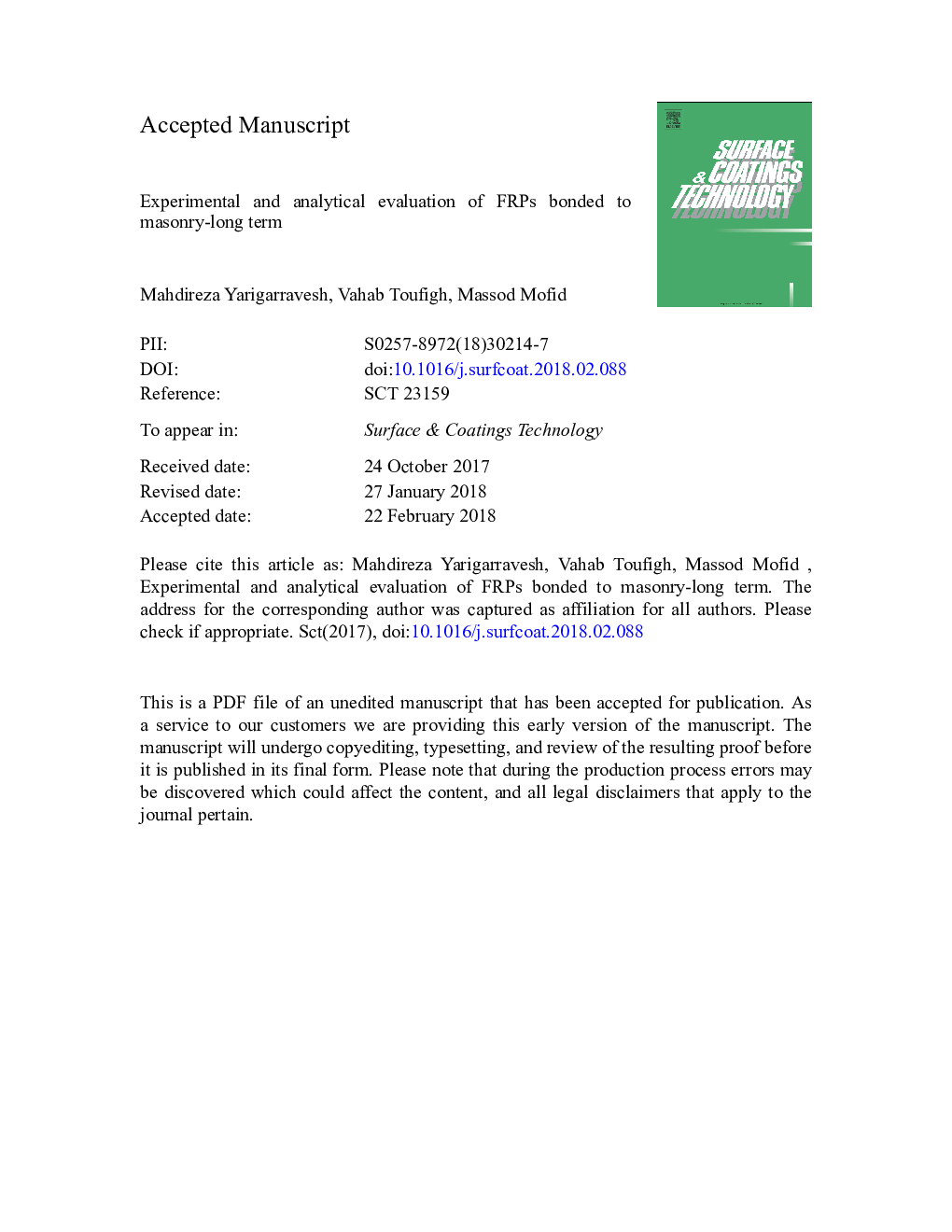| Article ID | Journal | Published Year | Pages | File Type |
|---|---|---|---|---|
| 8023916 | Surface and Coatings Technology | 2018 | 29 Pages |
Abstract
This research investigated the long-term environmental effects on the bond at the interface between fiber-reinforced polymer (FRP) and a masonry brick. Seven types of FRP fabrics were used and placed on the masonry brick using the wet lay-up technique. Unidirectional and bidirectional fibers made of aramid, carbon, and glass and also combination of these fabrics were used. A total of 525 specimens were exposed to five chemical solutions with pH values of 2.5, 7, 10, 12.5 and substitution sea water for 1, 3, 6, 9 and 12â¯months. A chamber was also used to simulate the ultraviolent (UV) radiation on the specimens. A series of single-lap shear tests were performed on these specimens to determine the reduction in the interfacial bond strength. The results indicated that the acidic solution had the most effect on the masonry specimens bonded with unidirectional fabrics. On the other hand, the effect of the alkaline solutions (with pH values of 12.5 and 10) on the deterioration of the bond between bidirectional fabrics and masonry was more considerable. Fresh water had a higher effect on bond strength than the sea water solution. Finally, the Taguchi method was used to obtain the variation level of each parameter for interfacial bond strength.
Related Topics
Physical Sciences and Engineering
Materials Science
Nanotechnology
Authors
Mahdireza Yarigarravesh, Vahab Toufigh, Massod Mofid,
